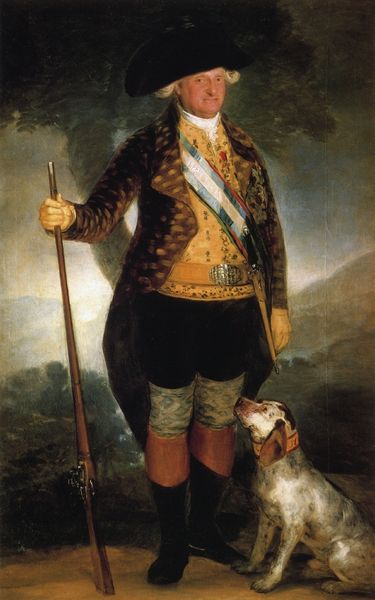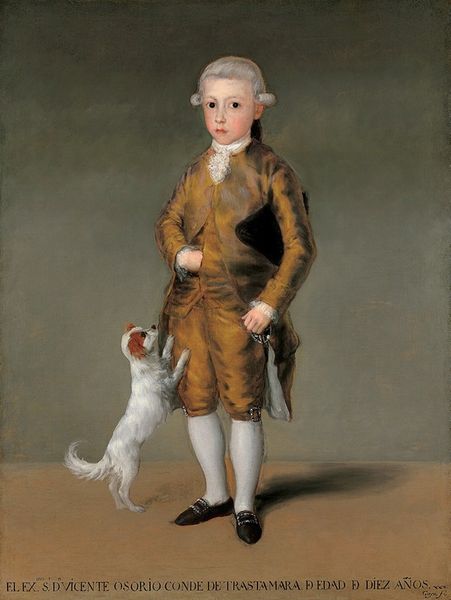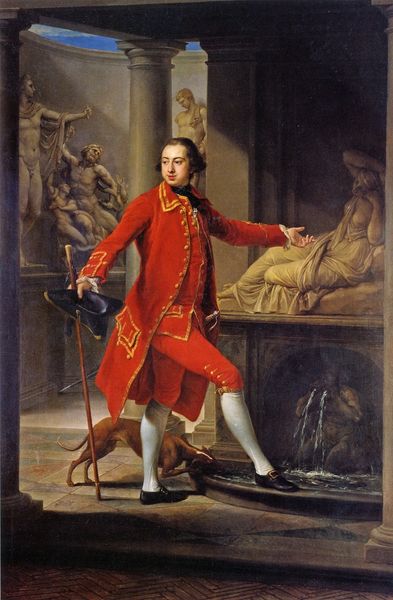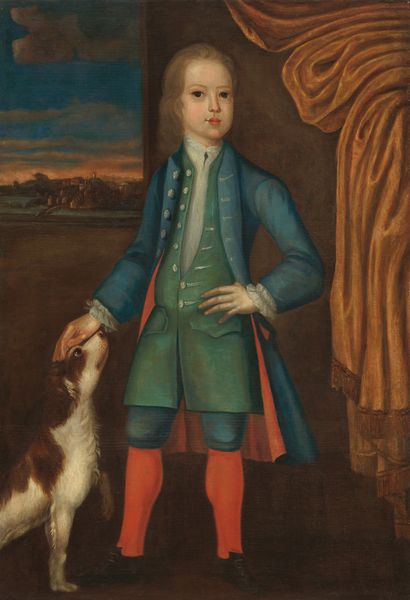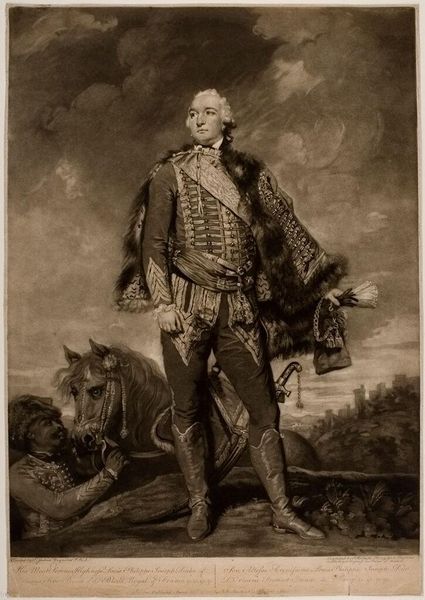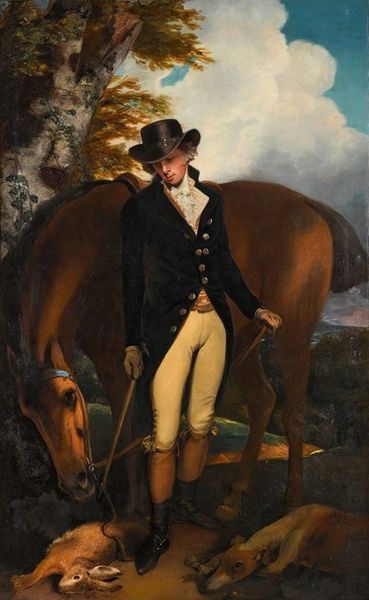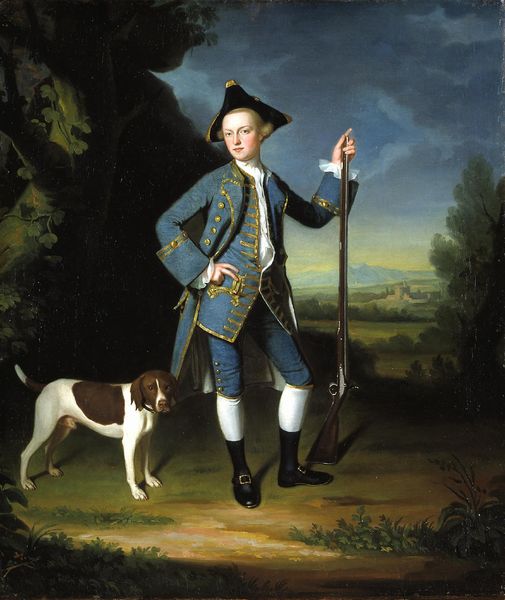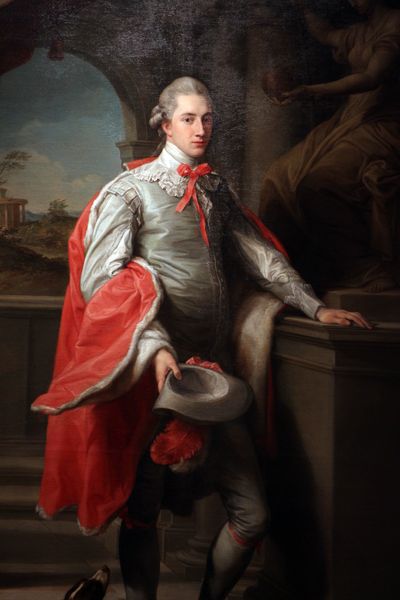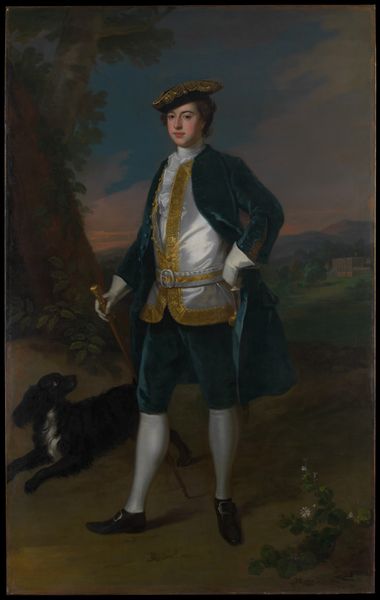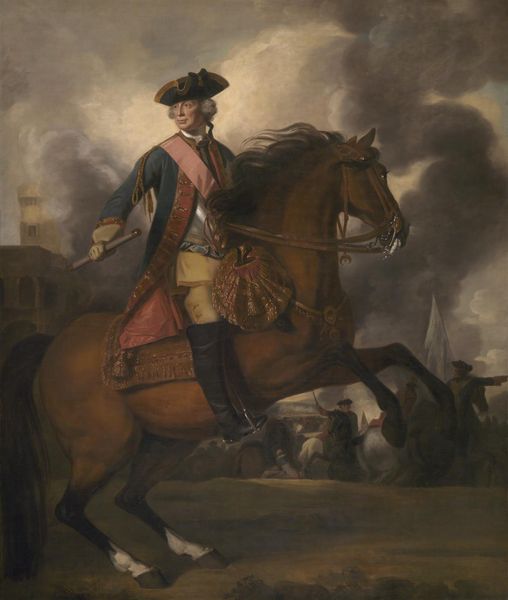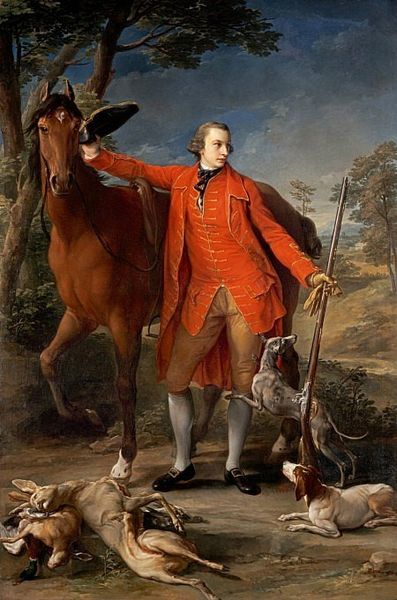
Dimensions: support: 1679 x 1068 mm
Copyright: CC-BY-NC-ND 4.0 DEED, Photo: Tate
Curator: Here we have John Vanderbank's portrait of "A Youth of the Lee Family, Probably William Lee of Totteridge Park," currently residing in the Tate Collections. Editor: The first thing that strikes me is the color! That saturated red coat is so striking against the muted landscape. It's almost theatrical, don't you think? Curator: Absolutely. The portrait serves as a visual signifier of class, wealth, and possibly nascent power. Consider the context of 18th-century British society; such displays were carefully constructed. Editor: And the greyhound! It's such an elegant touch. It's as if he's saying, "Yes, I am wealthy and refined...and I have excellent taste in canine companions." Curator: The dog, beyond just aesthetics, symbolizes nobility and hunting prowess. Vanderbank uses it to underscore Lee's aristocratic identity. The gaze, posture, even the sandals speak to this constructed persona. Editor: It does make you wonder about the real William Lee, doesn't it? What was he like beyond the portrait? Maybe slightly embarrassed by the frilly sandals? Curator: Perhaps. But within art history, we must grapple with what’s presented, with the choices made in representation, and what these choices signify about the subject and the artist within the social milieu. Editor: Well said! It really shows how much a single image can reveal, or conceal, about a person and their time. Curator: Indeed, it’s about peeling back those layers of meaning.
Comments
tate 8 months ago
⋮
http://www.tate.org.uk/art/artworks/vanderbank-a-youth-of-the-lee-family-probably-william-lee-of-totteridge-park-t03539
Join the conversation
Join millions of artists and users on Artera today and experience the ultimate creative platform.
tate 8 months ago
⋮
This dramatic portrait probably represents William Lee of Totteridge Park, near Barnet. At the time it was painted Lee would have been around thirteen years old. It is among John Vanderbank’s latest works, showing his characteristic use of brilliant colour and the stylistic influence of Rubens and van Dyck. In addition to his prominence as a painter, Vanderbank played an important role in the formation of an art academy in St Martin’s Lane during the 1720s. His career was, however, blighted by debt and drunkenness. Gallery label, February 2010


